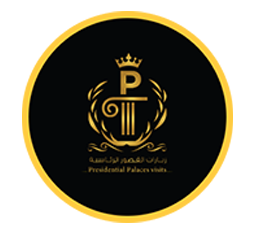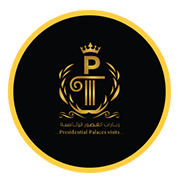Ras El Tin Palace
One of the oldest palaces in Egypt
Ras Al-tin Palace is one of the oldest palaces in Egypt, overlooking the Mediterranean Sea in Alexandria.
The palace of Ras Al-tin is one of the historical and archaeological monuments in Alexandria, and the historical importance of this palace is due to the fact that it is the only Palace that witnessed and contemporary the establishment of the family of Muhammad Ali Pasha in Egypt, which lasted about one hundred and fifty years, and is the largest palace of Alexandria, in which the telephone was introduced in 1879 late in the reign of Khedive Ismail before Britain removed him from the throne. It is the same palace that marked the end of the rule of the Alawite dynasty in Egypt when he witnessed the deposing of King Farouk and witnessed his departure to exile in Italy on the back of the Royal Yacht guarded from the port of Ras Al-tin.
Muhammad Ali began to build the palace of Ras Al-tin in 1834 to include it to his palaces in addition to other palaces that he owned in Alexandria such as Mahmoudiya Palace and Ibrahim Pasha Palace has been used in its construction and repair later by foreign engineers, including the French engineer cerezi Bey, who was brought by Muhammad Ali in 1828 to establish and supervise the, but supplemental works and the creation of additional wings remained in place until 1847, when it was officially opened.
During the British campaign on Egypt in 1882, the English bombed Alexandria during Fort renovations, destroying most of the city and causing panic to its residents. Two days after the bombing, the city raised its white flags, announcing its surrender to the English, which later ignited the Arab Revolt. Instead of defending the city, the Khedive Tawfiq received the commander of the British Fleet, Admiral Beauchamp Seymour, putting his authority at the disposal of the occupiers. The English soldiers then moved the Khedive from the RAML Palace to Ras Al-tin Palace, where he remained for most of the campaign.
The palace was built in the European style, which was common in Alexandria at the time, due to the large number of foreign communities in Alexandria at that time, and was used in the construction of this palace foreign workers and Egyptians, the palace was built at first in the form of a fortress, and was in its place fig trees that were
There is no old palace currently only the Eastern Door, which was incorporated into the construction of the new palace, and consists of 6 granite columns topped by Egyptian crowns bearing a threshold with seven circles in the form of a crown of copper written inside in copper letters Quranic verse and aphorisms about justice such as (Justice balance of security) – (good justice security of Kings) – (justice the name of Muhammad Ali and the date 1261 are written in the middle of it and still exist today.
This palace had a swimming pool with a glass-covered foyer, and King Farouk established a Marine bath instead of it on the breakwater after the Second World War, in a place that was intended to be an air defense site for the port of Alexandria.this year, he was connected by a long pier to the palace of Ras Al-tin. he was reached by road by Jeep and had a rest room with a bedroom, a full Office for preparing food and rooms filled with fishing gear. in recent years, the Navy has received all the belongings of King Farouk and his sisters, former princesses, as this was their main resort in Alexandria.
The palace of Ras Al-tin was rebuilt in the era of King Fouad in a style consistent with the spirit of modern times by the Italian engineer Ferrucci and engineer Hassan Pasha Al-Adawi (he also built the palace of Al-haramlak Park), and cost four hundred thousand pounds and became similar to the palace of Abdin but smaller than the first, then a knock leading to the main banquet hall, then the dining room and the closed round Hall, which is artificially lit and filled with carvings In the suite of King Farouk there is his own bathroom, which is a mirror image of Abidin’s bathroom, the bedroom and office room, then the glasses salon, then the secret door connected to the suite of the former Queen, where we find the decoration salon, the room and the private bathroom, which is similar to the same in Abidin, then we find the large and luxurious salon with (a large balcony) overlooking the port of Mahrousa, and then the small dining hall.
On the ground floor, there is the Hall of the grand King with pomp and grandeur, the wings of servants and courtiers, and then the round hall where the former King Farouk signed his abdication document.
The cellar also contains the third round Hall, which leads to the ladder to the berth of the guarded ship on which King Farouk left Egypt for Italy.
Next to the palace from this side is the special railway station that connects to the interior of the palace, which was intended for the transportation of King Farouk.

